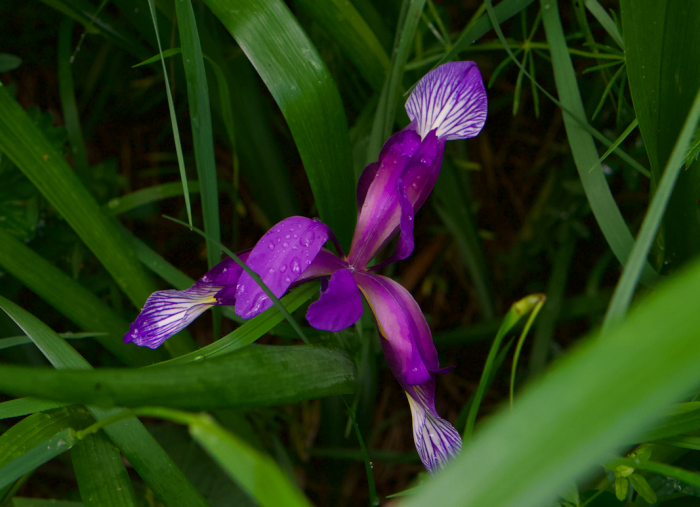Grass-Leaved Flag
(Iris graminea)
Grass-Leaved Flag (Iris graminea)
/
/

Conrad Altmann
CC BY 4.0
Image By:
Conrad Altmann
Recorded By:
Copyright:
CC BY 4.0
Copyright Notice:
Photo by: Conrad Altmann | License Type: CC BY 4.0 | License URL: http://creativecommons.org/licenses/by/4.0/ | Rights Holder: Conrad Altmann | Publisher: iNaturalist | Date Created: 2019-05-29T10:35Z |




















Estimated Native Range
Summary
Iris graminea, commonly known as Grass-leaved Flag, is a rhizomatous perennial herb native to meadows, grassy slopes, and open woodlands in southern Europe and parts of Russia. It typically grows to a height of 12-18 inches (30-45 centimeters) and has a clumping form with narrow, grass-like leaves. The flowers, which appear in late spring to early summer, are notable for their purple or violet-blue color and distinctive plum-like fragrance. They are relatively showy and add a splash of color to garden settings.
Grass-leaved Flag is valued for its ornamental flowers and ease of maintenance. It is often used in perennial borders, rock gardens, and as a ground cover. This Iris species prefers full sun to partial shade and requires well-drained soil. It is drought-tolerant once established and can handle a variety of soil types, though it thrives in moderately fertile conditions. While generally disease-resistant, Iris graminea can be susceptible to iris borer and root rot if grown in overly wet conditions. It is hardy to USDA Zones 3-9, making it a versatile choice for gardeners in a wide range of climates.CC BY-SA 4.0
Grass-leaved Flag is valued for its ornamental flowers and ease of maintenance. It is often used in perennial borders, rock gardens, and as a ground cover. This Iris species prefers full sun to partial shade and requires well-drained soil. It is drought-tolerant once established and can handle a variety of soil types, though it thrives in moderately fertile conditions. While generally disease-resistant, Iris graminea can be susceptible to iris borer and root rot if grown in overly wet conditions. It is hardy to USDA Zones 3-9, making it a versatile choice for gardeners in a wide range of climates.CC BY-SA 4.0
Plant Description
- Plant Type: Herb, Bulb
- Height: 0.5-1.5 feet
- Width: 0.6-1 feet
- Growth Rate: Moderate
- Flower Color: Purple
- Flowering Season: Spring
- Leaf Retention: Evergreen
Growth Requirements
- Sun: Full Sun, Part Shade
- Water: Medium
- Drainage: Fast, Medium
Common Uses
Border Plant, Deer Resistant, Drought Tolerant, Fragrant, Low Maintenance, Rabbit Resistant, Rock Garden
Natural Habitat
Native to meadows, grassy slopes, and open woodlands in southern Europe and parts of Russia
Other Names
Common Names: Grass-leaved Iris
Scientific Names: , Iris graminea, Chamaeiris graminea, Chamaeiris graminea subsp. pseudocyperus, Iris bayonnensis, Iris bayonnensis, Iris compressa, Iris graminea subsp. sylvatica, Iris graminea var. bayonnensis, Iris graminea var. latifolia
GBIF Accepted Name: